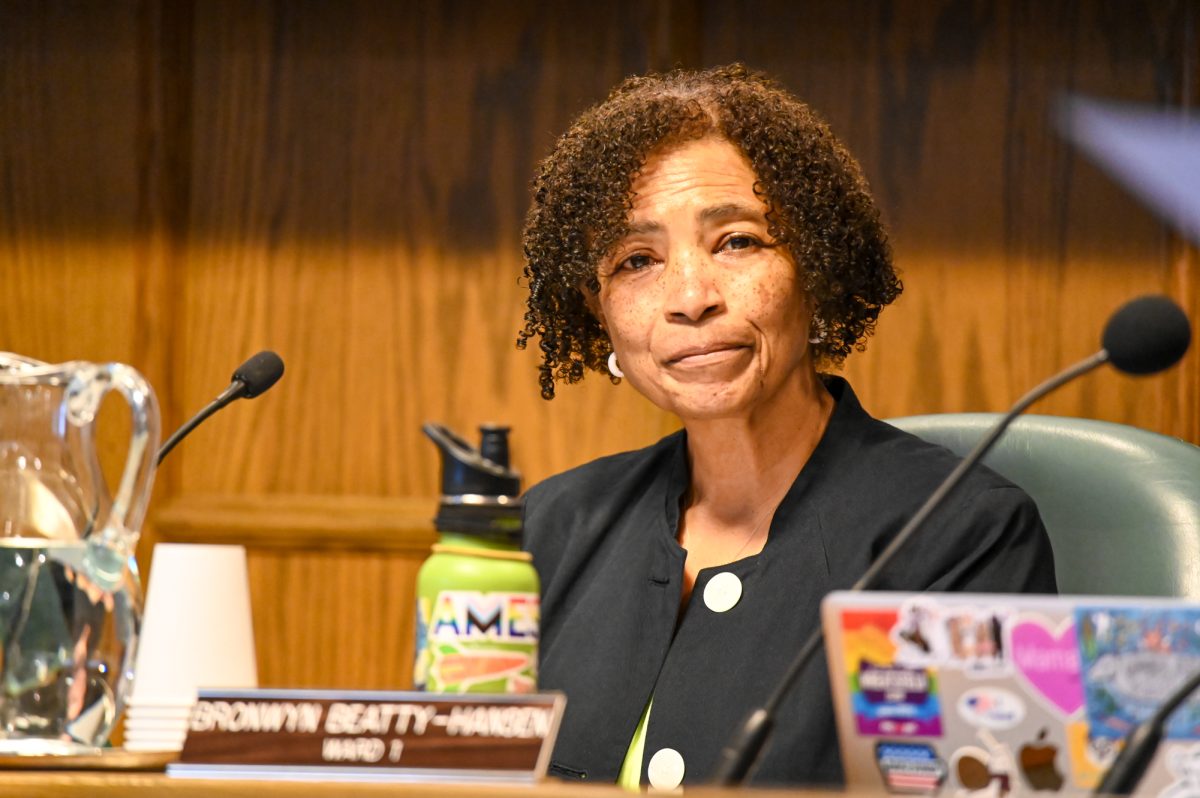COLUMN: Zoning laws unfairly discriminate
April 13, 2003
Editor’s Note: The following is the first in a series of two guest columns by Professor Robert DeKoven addressing local concerns.
Students attending Iowa State University in Ames, Iowa, are the latest victims of what are known as “single family housing zones.”
Cities have the power to regulate land use through zoning power. That’s why there are commercial areas and those areas zoned for residential living. In residential zones, cities can regulate between “single” family areas and “multi-family” areas. So in an area zoned for single families, all persons are supposed to be “related by blood or marriage.” These ordinances are discriminatory against students as well as unmarried couples who might adopt or care for foster children.
For example, a lesbian couple in Ames, who rent a home, are two unrelated persons. Because they cannot marry, they cannot be related by marriage. Assume they take in two foster children. There are now four unrelated persons living together. But it’s hardly fair to treat them differently than a heterosexual couple next door, which also has two foster kids.
Some of these zones date back to the days when cities could prevent unmarried couples (of the opposite sex) from living together. It was a crime called cohabitation.
In more recent times, like in Ames, cities allow some unrelated persons to live together. In Ames, no more than three unrelated persons can live together in one home. It’s called a rental occupancy ordinance, which apparently is only enforced against student tenants.
Naturally, if there are large homes near campuses, more than a few students will want to rent the home, split the rent and share expenses. It has gone on for centuries.
But in the United States, cities, using their police power, have normally gone after students to enforce these laws.
Assuming four students want to live together in a four-bedroom home near campus, they would have to obtain a conditional use permit to do so. The city would treat them like a group home.
Years ago, these laws faced a challenge from the U.S. Supreme Court. A city tried to prevent a woman from living with a boy she was caring for. Because the boy was not related to the woman by blood or marriage, the city argued that she violated the single family zone law. The Supreme Court held that the city could regulate on the basis of family status because there was a rational reason for trying to keep neighborhoods limited to single families only.
At the time, the court found that the city could prefer persons related by blood or marriage over persons not related by blood or marriage. It has been well over 30 years since the court reached that ruling and many attorneys feel the case is ripe to be overturned. Here’s why:
Under California law, for example, the California Supreme Court found that cities cannot distinguish between persons related by blood or marriage versus those, like students, who are not related by blood or marriage.
In other words, a city cannot prevent four unrelated persons from living together while letting a family of four live together in the house next-door.
By doing so, the city violates the freedom of association and privacy rights of the four persons who are unrelated by blood or marriage to live together. In order to do so, said California, the state needs to have a compelling reason.
In more recent years, even the U.S. Supreme Court has upheld the association rights of students.
It’s conceivable that the Supreme Court may change its mind on so-called “single family zones” in light of changing mores and living patterns.
Millions of “families” live together without the benefit of marriage.
Millions of gay and lesbian couples live together in single-family zones.
They are not related by blood and because they cannot marry, they are unrelated by marriage. Such laws have a disparate impact on them.
Cities can regulate housing according to density and square footage.
When a home, occupied by a single family of 10, or 10 unrelated persons, substantially interferes with the rights of neighbors to enjoy their property, such a home is a nuisance. A city, under nuisance abatement laws, can abate the nuisance by requiring the owner to remove the offending problem.
That’s the correct answer to problems caused by too many people living in a home. Singling out student renters is simply discriminatory and based on stereotypical behavior.
Robert DeKoven is a professor at California Western School of Law. He can be reached at [email protected].






